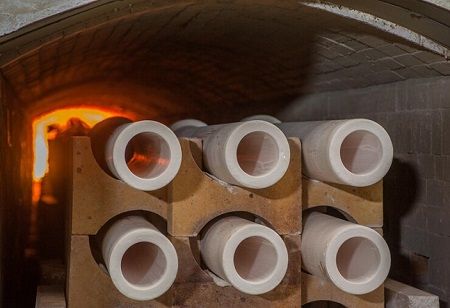
Cleveland-Cliffs has been given the patent for a continuous casting machine. This machine comes with a refractory tundish funnel as well as a collector., which is used for channeling steel to a tundish bath from ladel. The collector helps in enhancing steel flow efficiency with the unique opening transitioning from cylindrical to cross-shaped.
The global refractories market is anticipated to reach USD 45.4 billion by 2029, growing at a CAGR of 4.4 per cent until 2029. Known for their ability to withstand extremely high temperatures refractory materials are indispensable in a variety of manufacturing processes as they help materials neither to degrade nor lose their structural integrity. Refractory materials play a vital role in sectors which operate/function under mechanical wear, chemical corrosion as well as extreme heat. The unique properties of these materials make them highly vital for smooth as well as efficient functioning of high-temperature environments. This helps in ensuring the longevity as well as operational efficiency of the manufacturing processes.
The primary role of refractory materials is to act as a protective barrier in kilns, reactors & industrial furnaces. And these environments should exceed temperatures 1500 degree Centigrade & the equipment & structures will deteriorate rapidly without proper refractory linings. These linings not only protect the equipment but they also retain the heat within the system which helps in contributing to the energy efficiency. This is highly crucial to reduce energy consumption & consequently the operational costs which make refractory materials highly vital for industries which include ceramics, cement manufacturing, glass production, and metallurgy. In this article let us look at
In the steel industry, refractory materials are used in blast furnaces, ladles, converters and other high-temperature processing equipment. The steelmaking process comprises melting & refining of iron ore at temperatures which exceed 1600 degree centigrade which requires materials that not just withstand these temperatures but also has the capacity to resist the corrosive effects of molten metal & slag. Refractories that include magnesia-carbon bricks & dolomite bricks are used extensively for lining furnaces & protecting the structural integrity of the equipment and this ensures safe & efficient manufacturing.
“The global refractories industry is anticipated to reach $44.82 billion by 2029. One of the key factors boosting the refractories sector is the increasing demand for high-grade refractories from the iron and steel sectors,” says Vaibhav Dhupar, Managing Director, Vaibhav Refractories.
The cement industry relies heavily on refractory materials for lining kilns as well as other high temperature processing units, the manufacturing of cement comprises the calcination of limestone as well as other raw materials at temperatures around 1450 degree centigrade. Refractory linings in the cement industry are highly crucial for maintaining thermal efficiency in the cement kilns as well as protecting the kiln shell from mechanical & thermal stress. Monolithic refractories & high alumina bricks are used commonly in the cement production process owing to their high-temperature stability as well as resistance to chemical attack from the raw materials & fuel that are used in kiln.
Refractory materials are used for constructing the furnaces & tanks where raw materials are melted as well as refined into glass. The melting temperatures for glass can exceed 1700 degree centigrade. This helps in necessitating the use of refractories which can withstand these extreme conditions without degrading. Owing to their high melting point as well as ability for resisting the corrosive nature of molten glass, silica bricks are a popular choice for glass furnaces. In the glass manufacturing, the stability & durability of refractory materials are crucial to ensure the consistency as well as quality of the final product.
The development of advanced refractory materials is being driven by the need for enhancing energy efficiency, the performance as well as longevity of industrial equipment & reduces the environmental impact. Innovations in this landscape comprise the use of nanotechnology for creating refractories with superior mechanical & thermal properties, the use of computer modeling & simulation for designing & optimizing refractory linings, the development of eco-friendly materials which help in decreasing the carbon footprint of the production process and these advancements have resulted in significant improvements in the efficiency and reliability of the process of manufacturing.
“Strong demand for materials from core industries, governmental initiatives like 'Make in India', technological advancements, increasing exports, and a focus on sustainability and waste management are the primary reasons driving the growth of the industry,” says Pradip Kumar Mohanty, Director, Refcem Refractories.
Refractory materials are vital for the success of several manufacturing processes as they offer the necessary protection as well as stability for equipment that operate under extreme conditions. The importance of these materials span a wide range of sectors, right from steel & cement to glass & petrochemicals. It highlights their versatility as well as essential role in modern manufacturing. The development of new & enhanced refractory materials will continue to improve the safety, sustainability and efficiency of the manufacturing processes which ensures their relevance in the future.
We use cookies to ensure you get the best experience on our website. Read more...